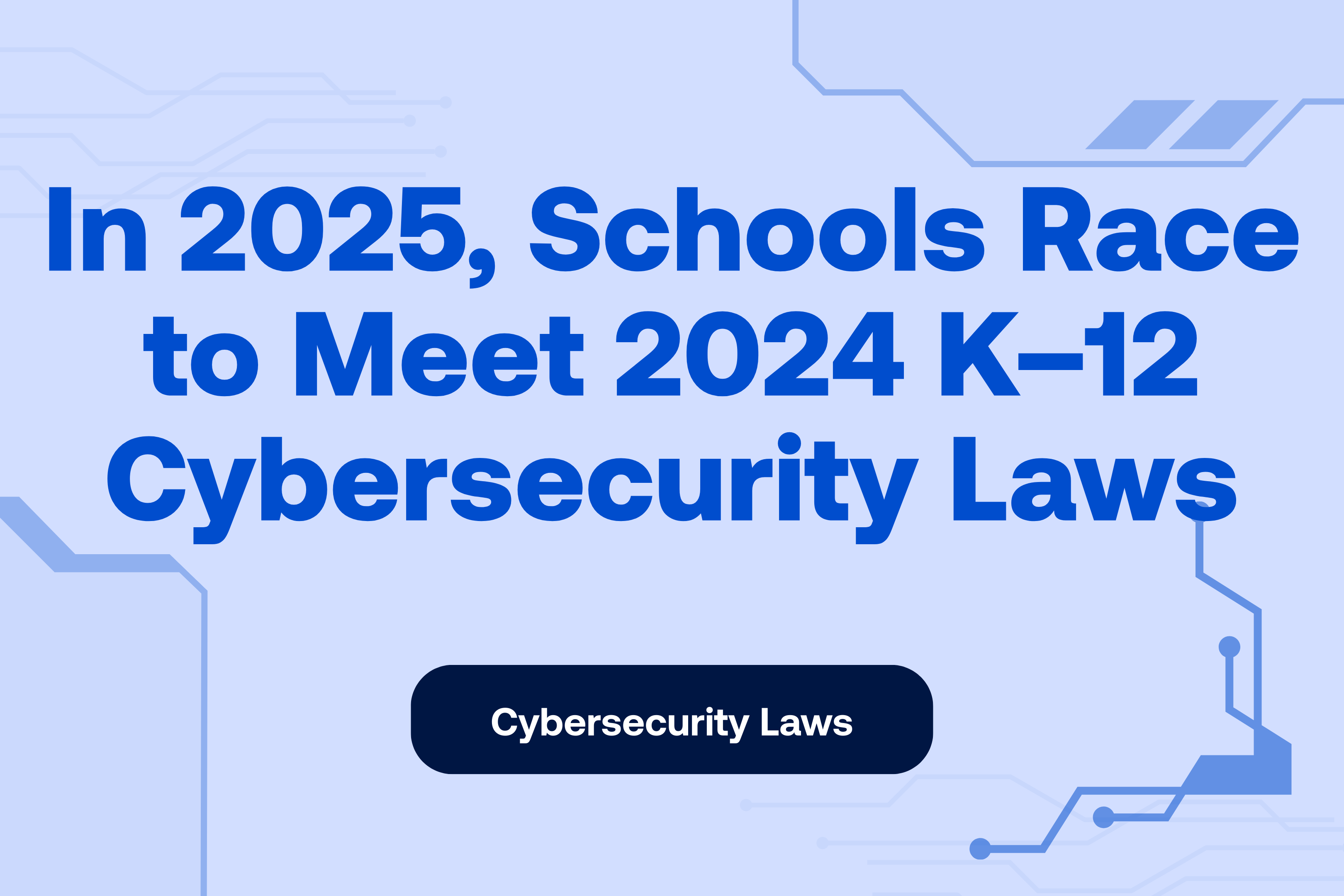The new normal: compliance is no longer optional
In 2024, statehouses across the U.S. introduced (and in many cases passed) school-focused cybersecurity measures everything from incident-reporting timelines to minimum safeguards like multi-factor authentication (MFA), phishing-awareness training, and recurring risk assessments. A 2024 K12Dive trends report framed the change plainly: cybersecurity expectations for districts are moving from voluntary to required.
For superintendents, board members, and IT leaders, that’s both good news and a grind. Stronger rules can protect students and staff. But they also come with deadlines, documentation, and technical standards that many districts weren’t resourced to meet. In 2025, the conversation is about execution.
Why lawmakers moved: four forces behind the push
- More attacks on schools. Ransomware, data breaches, and phishing surged, pushing legislators toward baseline controls that reduce risk at scale.
- Student data protection. Schools hold sensitive information on minors. Prime targets for identity theft, so lawmakers are aligning requirements with broader privacy expectations.
- Funding signals. Federal discussions (e.g., K–12 cybersecurity initiatives and E-rate modernization) increasingly reward districts that can show readiness.
- Public pressure. Parents, unions, and advocacy groups amplified calls for stronger safeguards after high-profile breaches.
What the laws most often require
Across states, four themes keep appearing. Districts spending 2025 getting “audit-ready” are focusing here:
- Annual cybersecurity training (often with phishing simulations)
What it means: Teachers and staff (and in some cases students) complete regular training; districts run realistic phishing tests.
How districts are answering: Short, schedule-friendly modules and automated simulations to build habits without derailing instruction.
- MFA for sensitive systems
What it means: Users accessing student or staff data must add a second factor at login.
How districts are answering: Phased rollouts (start with admin and HR/finance), clear guidance, and “why this matters” training to reduce pushback.
- Faster incident reporting and response
What it means: Notify state agencies or the public within defined windows, sometimes as tight as 72 hours.
How districts are answering: Clear playbooks, centralized logging, and drills to practice the hand-offs from detection to documentation to escalation.
- Recurring risk assessments or third-party audits
What it means: Annual or bi-annual reviews of security posture, frequently requiring independent validation.
How districts are answering: Partner-led assessments, evidence collection, and remediation roadmaps that map findings to action.
The 2025 bottlenecks: where districts get stuck
- Thin staffing. Rural and smaller districts may have one or two technicians covering thousands of devices.
- Budget timing. Laws can arrive faster than funds to implement them.
- Vendor sprawl. Patchwork tools create integration gaps and duplicate work.
- Training fatigue. Staff already juggle mandatory PD; long courses won’t stick.
Districts making headway this year are consolidating tasks (training, simulations, reporting) into fewer systems, choosing “micro-learning” over marathon modules, and documenting everything from day one.
The upside of moving early
Districts that spent late-2024 and early-2025 getting ahead are seeing four dividends:
- Funding readiness. “Compliance-ready” districts are better positioned for competitive cybersecurity grants.
- Insurance leverage. Carriers increasingly weigh training participation, MFA coverage, and assessment cadence.
- Reputation protection. Demonstrating proactive security earns trust with families and staff before a crisis.
- Operational calm. When requirements arrive, the evidence is already there; no last-minute scrambles.
A 5-step “legislative readiness” playbook for 2025
- Audit where you stand. Map your current state to the four common requirements; flag gaps.
- Brief leadership and the board. Align on the stakes and potential penalties for non-compliance.
- Prioritize quick wins. Start with MFA for high-risk accounts and launch phishing simulations to build momentum.
- Choose scalable tools. Pick platforms that can adapt as state rules evolve, minimizing future vendor churn.
- Document everything. Track completions, incidents, and fixes; most laws require proof, not just effort.
Bottom line for 2025
The 2024 legislative wave set the floor. 2025 is about turning compliance into culture training that fits the school day, MFA people actually use incident reporting that’s rehearsed, and audits that lead to action. Districts that operationalize these routines now won’t just “pass the test”; they’ll measurably reduce risk for the students and staff they serve.
Editor’s note: Districts seeking help with state-aligned training, phishing simulations, incident reporting workflows, and third-party assessments are working with providers such as CyberNut to centralize those moving parts and keep pace with evolving state requirements.
